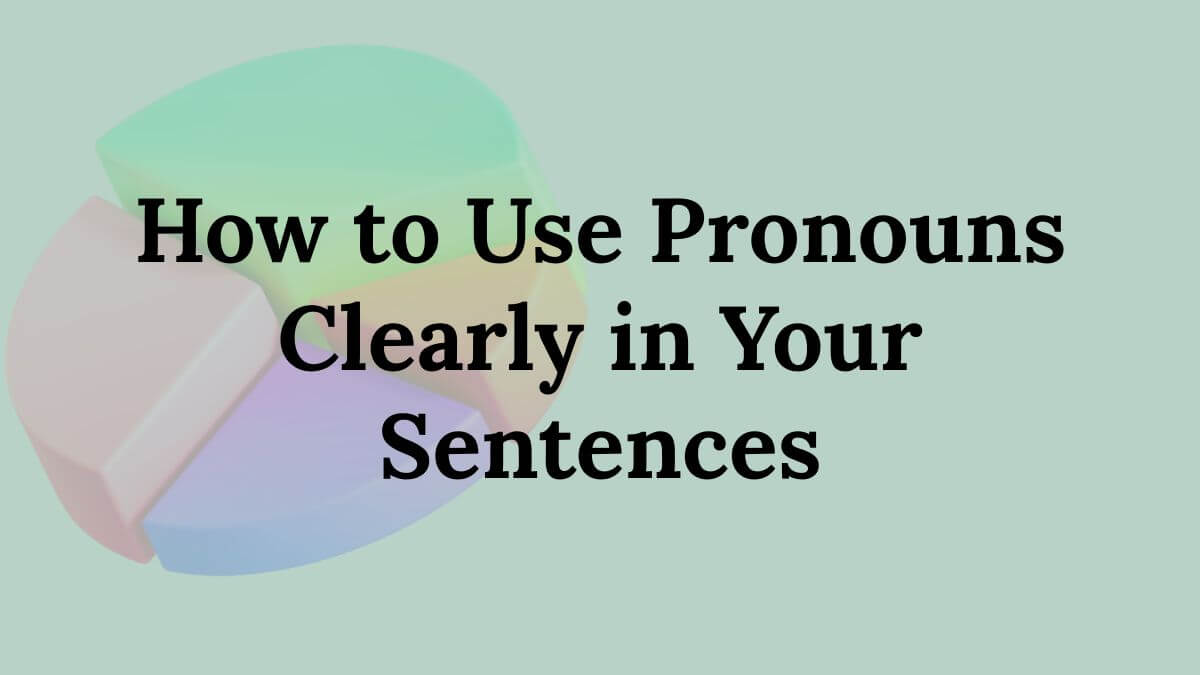Making sentences effective and easy to understand is a key part of mastering English. How to Use Pronouns. One of the best ways to improve sentence clarity is through good pronoun use. Whether you’re writing an email, telling a story, or explaining an idea, pronouns can make your sentences smoother and less repetitive. In this guide, we’ll explore how proper pronoun use helps in making sentences clearer, more natural, and grammatically correct. With simple explanations, real examples, and helpful tips, you’ll learn how to choose the right pronouns every time.
Why Pronouns Matter in Making Sentences
Pronouns are small words like he, she, it, they, this, that, and who that stand in for nouns. Instead of repeating the same noun again and again, pronouns help connect ideas and reduce repetition. This keeps your writing clean and your meaning clear.
Example:
Maria loves her cat because she thinks it’s adorable.
Maria loves her cat because she thinks it’s cute.
In the revised sentence, the use of her and she makes it more readable and natural. That’s the power of using pronouns well.
Types of Pronouns That Help in Making Sentences Clear
Different types of pronouns play different roles in sentences. Let’s look at the most important ones and how they improve clarity. How to Use Pronouns
1. Subject Pronouns
Subject pronouns perform the action in a sentence. They replace the noun that’s doing something. How to Use Pronouns
Subject Pronouns: I, you, he, she, it, we, they
Example: John is tall. John plays basketball.
John is tall. He plays basketball. How to Use Pronouns
2. Object Pronouns
Object pronouns receive the action in a sentence.
Object Pronouns: me, you, him, her, it, us, them
Example:
Sarah called Michael. Sarah thanked Michael.
Sarah called Michael. She thanked him.
3. Possessive Pronouns
Possessive pronouns show ownership.
Possessive Pronouns: mine, yours, his, hers, its, ours, theirs
Example:
This book is mine, not yours.
Using possessive pronouns avoids awkward repetition and keeps sentences short and clear.
4. Reflexive Pronouns
Used when the subject and the object refer to the same person or thing—for example, “She taught herself to paint.”
Reflexive Pronouns: myself, yourself, himself, herself, itself, ourselves, yourselves, themselves
Example:
I taught myself how to cook.
This keeps the sentence grammatically correct and focused. How to Use Pronouns
Common Pronoun Mistakes That Make Sentences Confusing
Even advanced learners make simple pronoun errors. Here are some common pronoun mistakes—and how you can fix them for clearer, more accurate sentences.
2. Mixing Up Subject and Object Pronouns
I went to the store.
I went to the store.
She gave the gift to him.
She gave the gift to him.
Use subject pronouns for the doer and object pronouns for the receiver of the action. How to Use Pronouns
2. Unclear Pronoun References
When John met David, he was very excited.
(Who was excited?)When John met David, John was very excited.
When John met David, David was very excited.
Always make sure the pronoun clearly refers to the right person or thing.
Read More:
Basic Sentence Structure Made Easy With Clear Examples
10 Simple English Dialogues for Beginners: Grow Your Speaking Skills
Making Sentences Better with Pronoun Consistency
Avoid switching pronouns randomly. Keep your point of view consistent.
When a person learns grammar, they improve.
When a person learns grammar, he or she improves.
When people learn grammar, they improve.
Match your pronouns in number (singular/plural) and gender where needed. How to Use Pronouns
Using Pronouns in Complex Sentences
Pronouns are especially useful in long or complex sentences. They help maintain flow and avoid awkward repetition.
Sarah had a friend named Lily. She admired her because she was honest.
(This is unclear—who is “she”?)
Sarah admired Lily because Lily was honest.
Sarah admired Lily because Lily was always honest and dependable.
Sometimes, repeating the noun improves clarity.
Practice Makes Perfect: Making Sentences with Pronouns
A great way to improve is by practicing. Try rewriting repetitive sentences using appropriate pronouns.
Before: Lisa went to Lisa’s room because Lisa was tired.
After: Lisa went to her room because she was tired.
Practice exercises like these can make a big difference.
How to Use Pronoun
Teaching Tip for Educators: Helping Students Make Sentences
For teachers, guiding students in pronoun use can dramatically improve their communication.
Focus on:
- Replacing repeated nouns with appropriate pronouns
- Fixing unclear references
- Practicing different types of pronouns in context
- Identifying and correcting pronoun errors
Use visual aids, sentence games, and real-life examples to keep students engaged while learning how pronouns enhance sentence clarity. How to Use Pronouns
Conclusion
Good pronoun use is essential for making sentences clear, natural, and easy to understand. Whether you’re a learner aiming to write better or a teacher helping students improve, mastering pronouns is a step toward effective English communication. Keep practicing, stay consistent, and remember: a small word like “it” or “they” can make a big difference in making sentences shine! How to Use Pronouns
